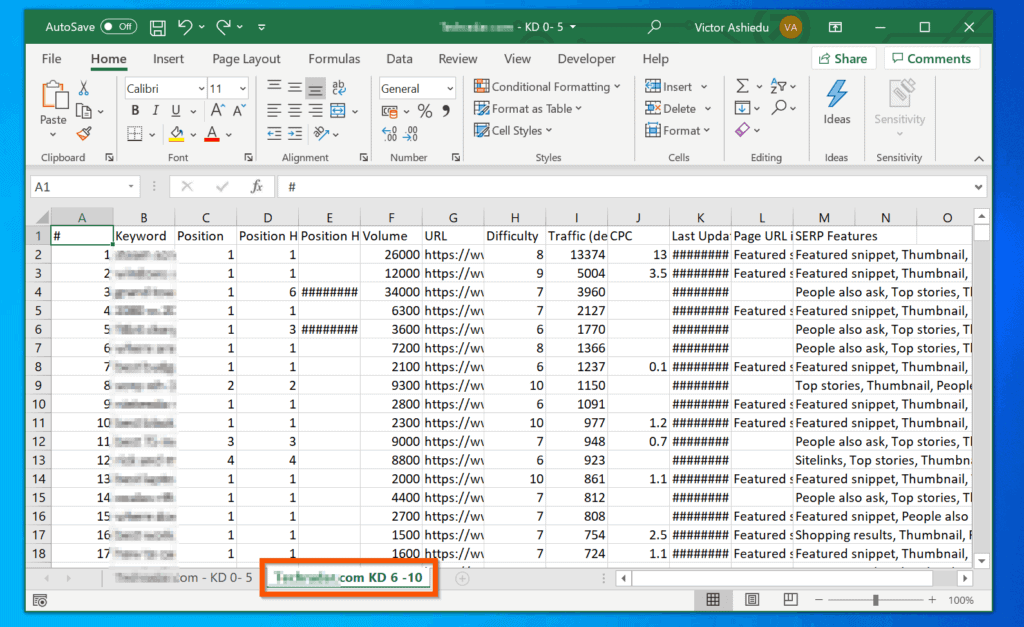5 Ways to Merge Excel Files into One Sheet

Merging multiple Excel files into a single worksheet can streamline your data analysis process, making it easier to consolidate information from various sources. This guide explores five effective methods to merge Excel files into one sheet, each suitable for different scenarios and levels of Excel proficiency.
1. Manual Copy-Paste

The simplest method for merging Excel files involves manually copying and pasting data:
- Open all the Excel files you want to merge.
- Copy the data from one file.
- Paste this data into a new, blank workbook.
- Repeat the process for each file, ensuring alignment and placement are consistent.
🔎 Note: This method is most suitable for a small number of files with similar data structure.
2. Using Excel’s Built-in Features

Excel offers powerful tools like Consolidate and Power Query for merging:
Consolidate:

- Select the cell where you want the merged data to appear.
- Go to the Data tab, click on ‘Consolidate’.
- Choose your function (e.g., Sum, Average) and select the ranges from each file.
Power Query:

- Click on Data > Get Data > From File > From Workbook.
- Navigate to each Excel file, and combine them into a single query using Append Queries.
- Load the data into the Excel worksheet.
3. VBA Macro

For repetitive tasks, a VBA macro can be programmed:
Sub MergeExcelFiles()
Dim FolderPath As String
Dim FileName As String
Dim WS As Worksheet
FolderPath = "C:\YourFolderPath\"
FileName = Dir(FolderPath & "*.xlsx")
Do While FileName <> ""
Workbooks.Open FolderPath & FileName
For Each WS In ActiveWorkbook.Worksheets
WS.Copy After:=ThisWorkbook.Sheets(ThisWorkbook.Sheets.Count)
Next WS
Workbooks(FileName).Close
FileName = Dir()
Loop
End Sub
- Replace `C:\YourFolderPath\` with your folder's path.
- Save your Excel file with a macro-enabled format (.xlsm).
💡 Note: VBA can be intimidating for beginners, so ensure you have backups before running macros.
4. Using External Tools

Software like Power BI or online tools can provide an efficient solution:
- Upload your Excel files to these tools.
- Use their in-built merging functionalities.
- Export or download the merged data as an Excel file.
| Tool | Pros | Cons |
|---|---|---|
| Power BI | Rich data transformation capabilities, can handle large datasets | Requires learning curve, premium features might be costly |
| Online Merging Tools | Quick, often free, simple interfaces | Limited functionality, data privacy concerns |

5. Python Script with Pandas

If you’re comfortable with Python, you can leverage its simplicity:
import pandas as pd
import os
# Directory path
directory = r'C:\YourFolderPath'
# List all Excel files in the directory
files = [file for file in os.listdir(directory) if file.endswith('.xlsx')]
# Read all Excel files into DataFrames
dfs = [pd.read_excel(os.path.join(directory, file)) for file in files]
# Merge DataFrames
merged_df = pd.concat(dfs, ignore_index=True)
# Write the merged DataFrame back to Excel
merged_df.to_excel('merged_excel_file.xlsx', index=False)
- Ensure you have the `pandas` library installed.
- Adjust the `directory` path to where your Excel files are stored.
After walking through these five approaches to merge Excel files, you'll see that each method has its own merits, suited to different user needs:
- Manual Copy-Paste: Best for small datasets.
- Excel's Built-in Features: Good for moderate to advanced Excel users.
- VBA Macro: Excellent for automation of repetitive tasks.
- External Tools: Provides robust merging capabilities beyond Excel's native features.
- Python with Pandas: Offers a programmatic approach for large datasets.
👉 Note: Always ensure backups of your data before proceeding with any merging operations.
Each of these methods brings efficiency and structure to your Excel workflow, allowing you to handle data more effectively. Whether you prefer the manual method for simplicity, or dive into the depths of Python for large-scale data management, you now have several tools in your kit to seamlessly merge Excel files into one cohesive sheet. Remember, understanding the nature of your data and your comfort level with different tools will guide which method best suits your needs.
Can I merge Excel files with different data structures?

+
Yes, but you’ll need to ensure the data aligns properly during the merge process, particularly if using built-in tools or programming. Manual adjustments might be necessary.
Is there a limit to how many Excel files I can merge?

+
The limit depends more on your computer’s memory and Excel’s processing capabilities than the software itself. External tools like Power BI or Python might handle larger datasets better.
Are macros safe to use for merging files?

+
Macros are safe if you create them or trust the source. Always enable macros only from trusted sources and keep backups of your data.
Can I undo a merge if I’ve made a mistake?

+
Not easily within Excel itself. Make sure to have backups of your original files before merging. External tools might provide undo options.
What’s the fastest method for merging many Excel files?

+
Using Python scripts or VBA macros can be the fastest, especially when dealing with large numbers of files or complex merging scenarios.



